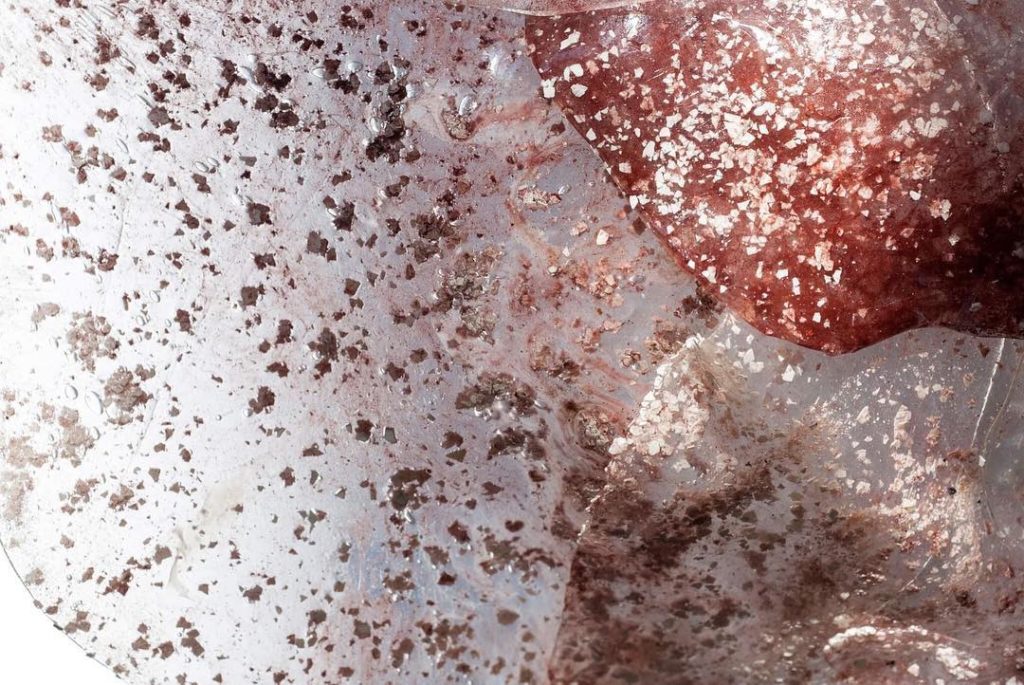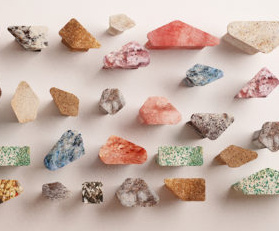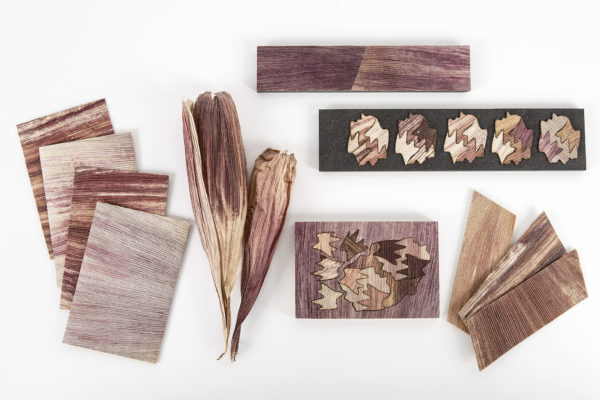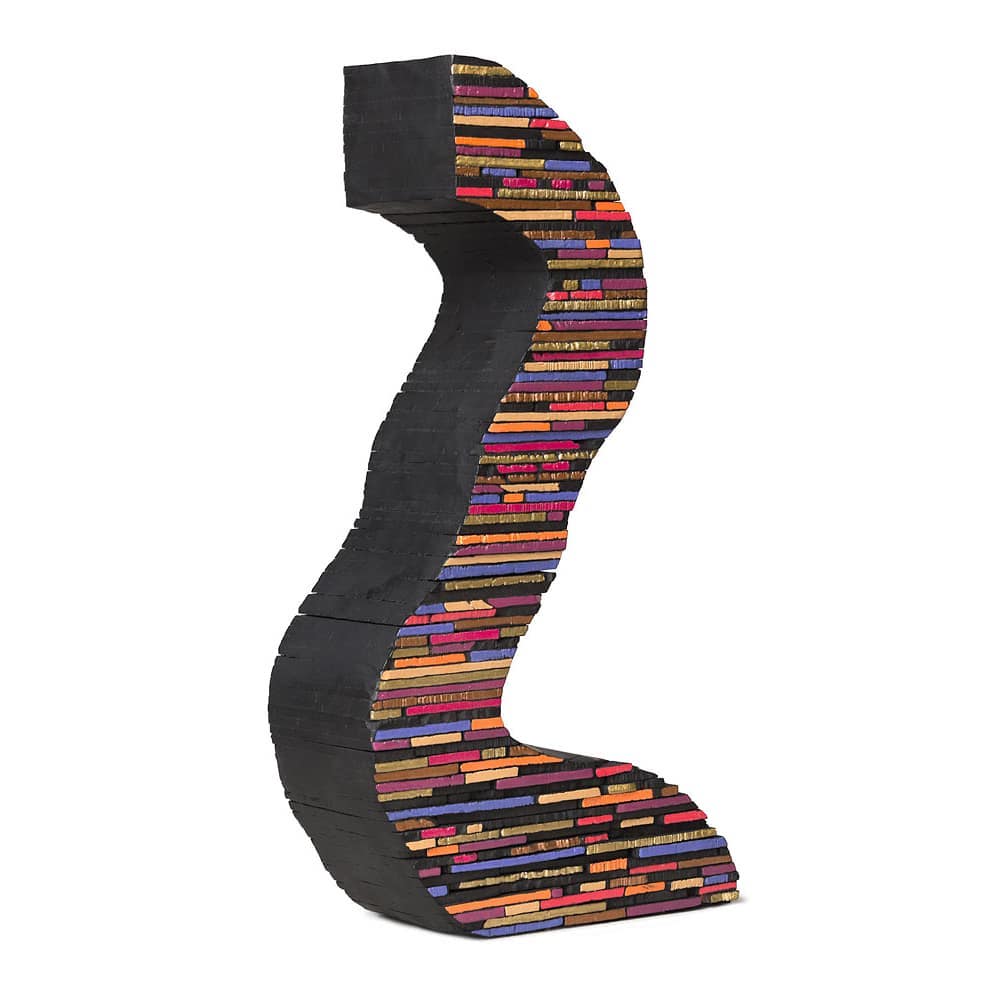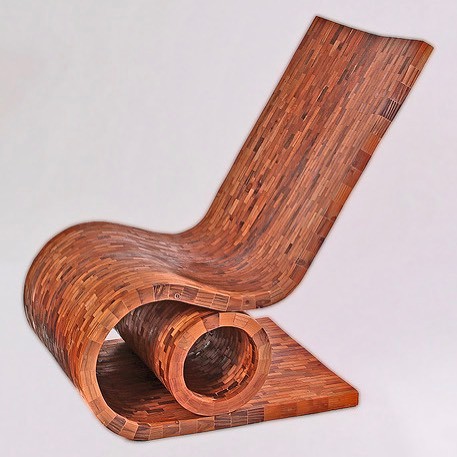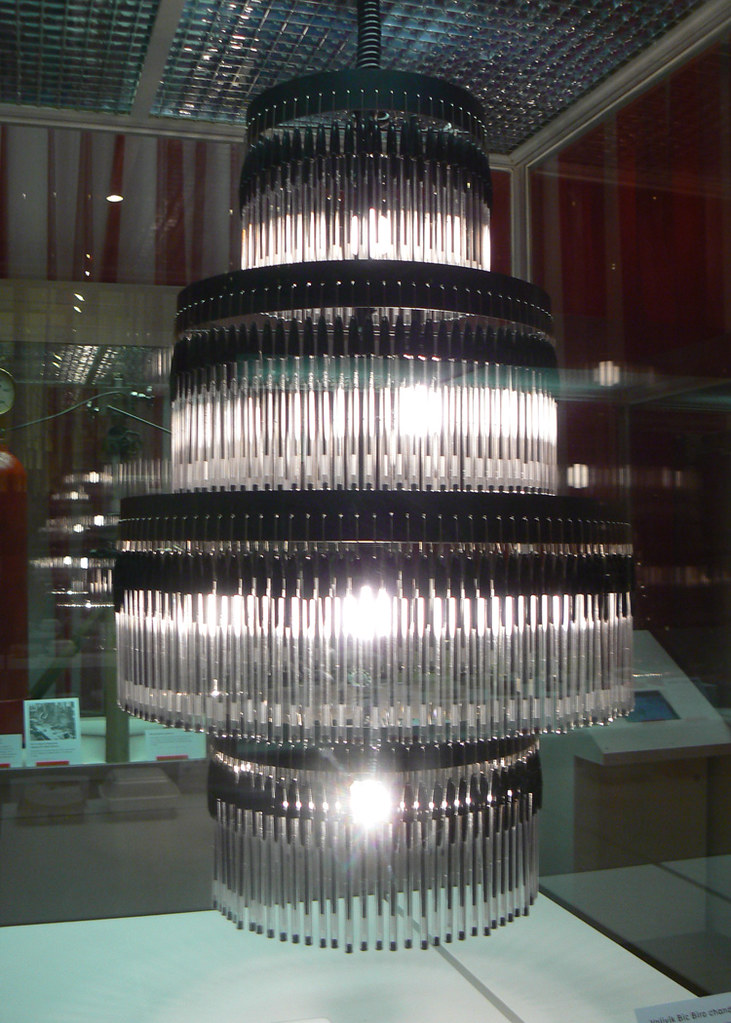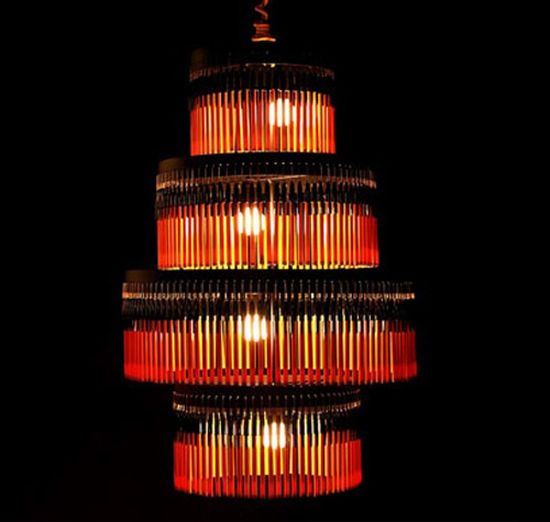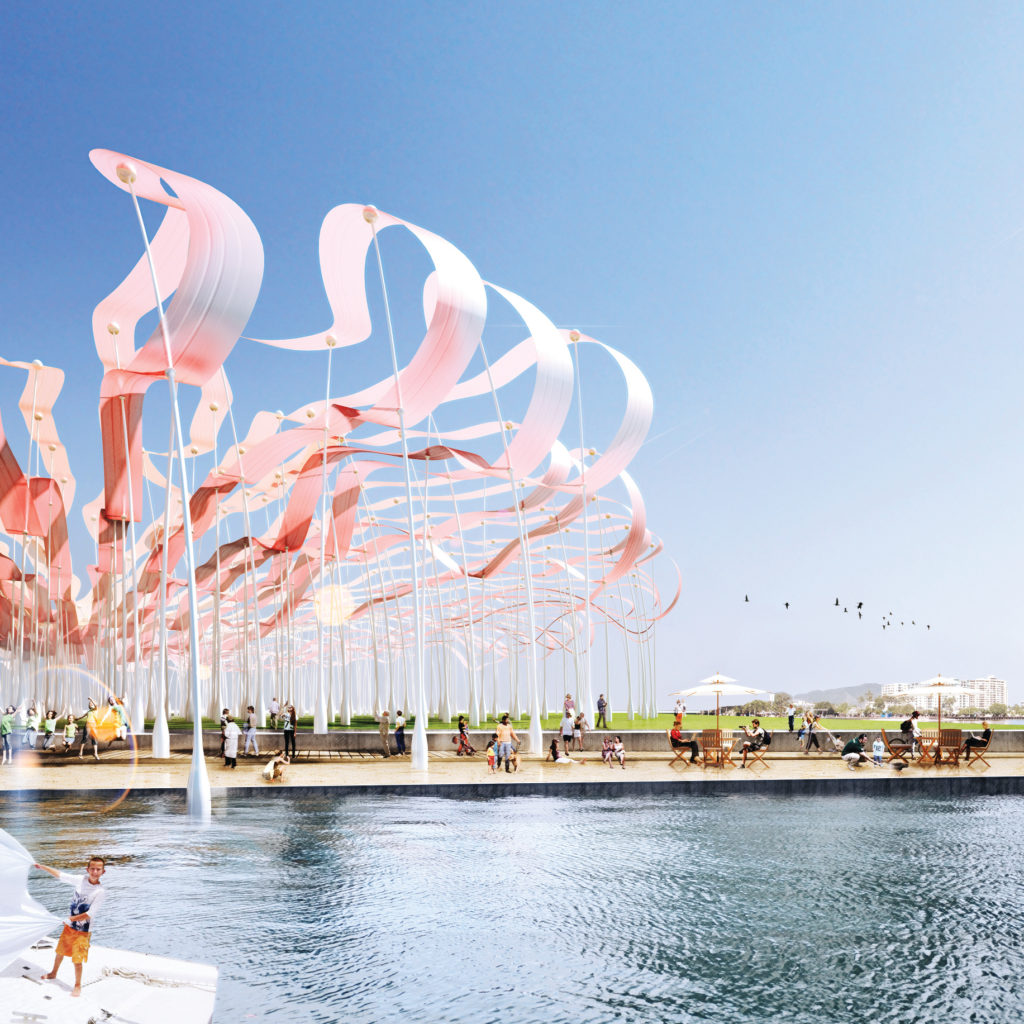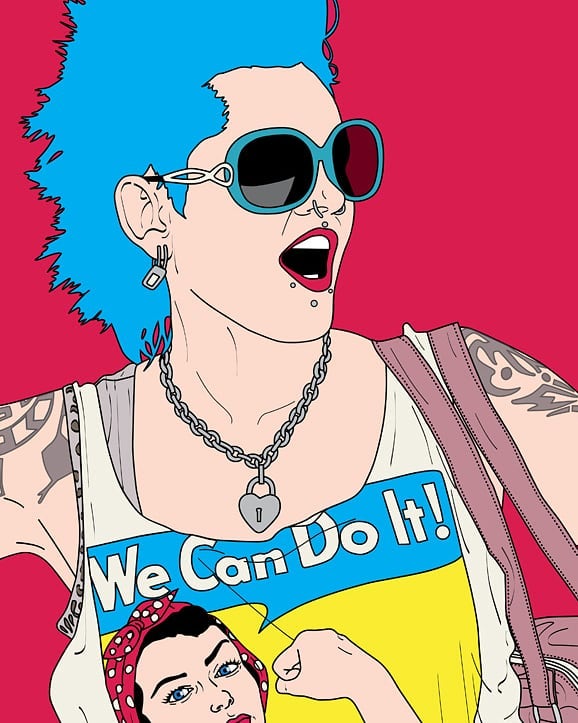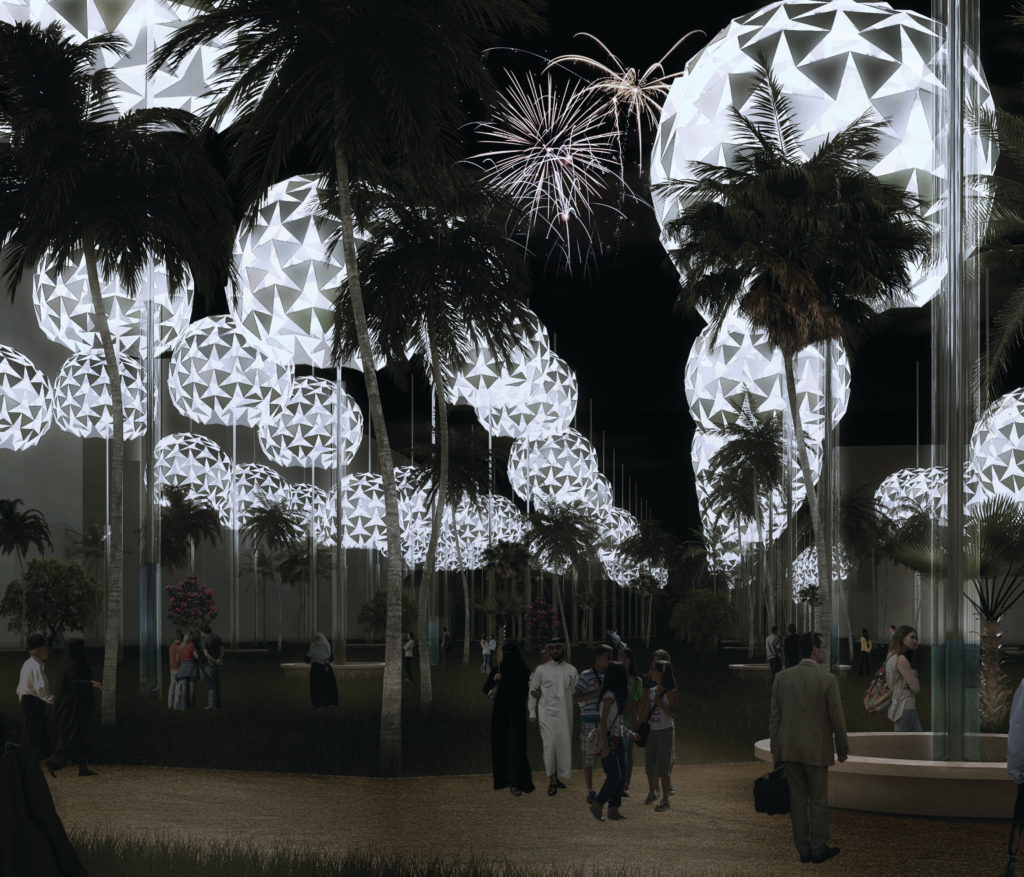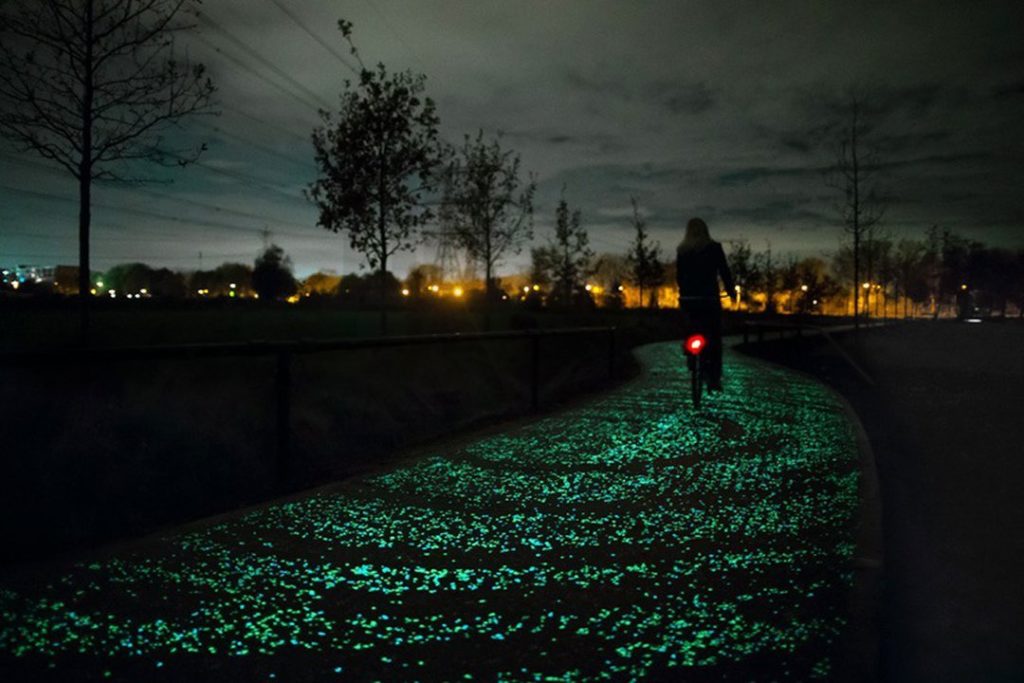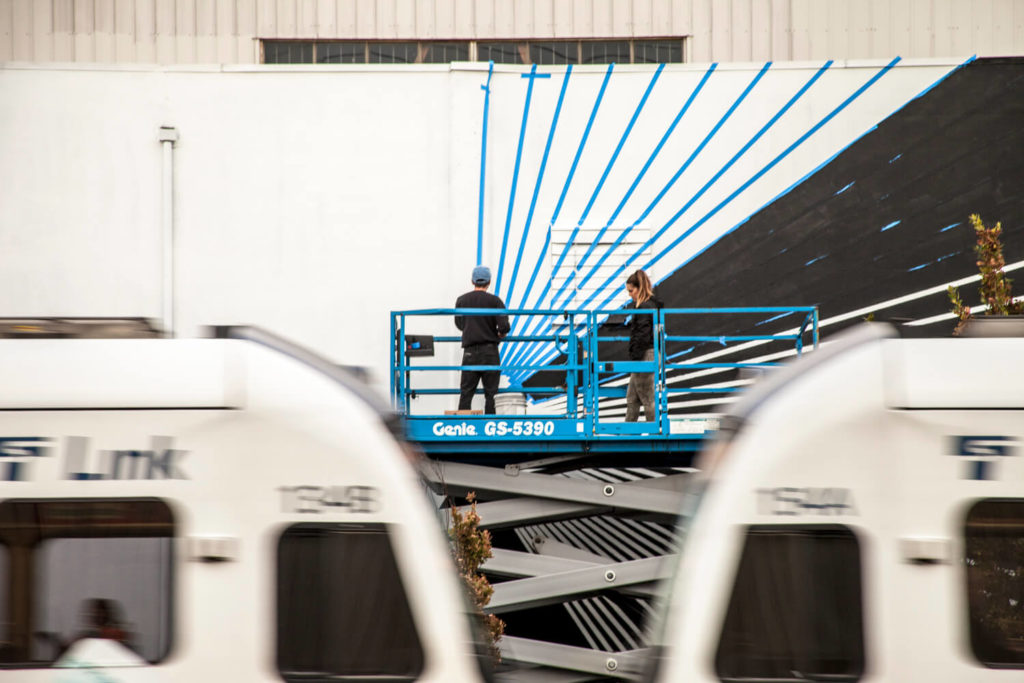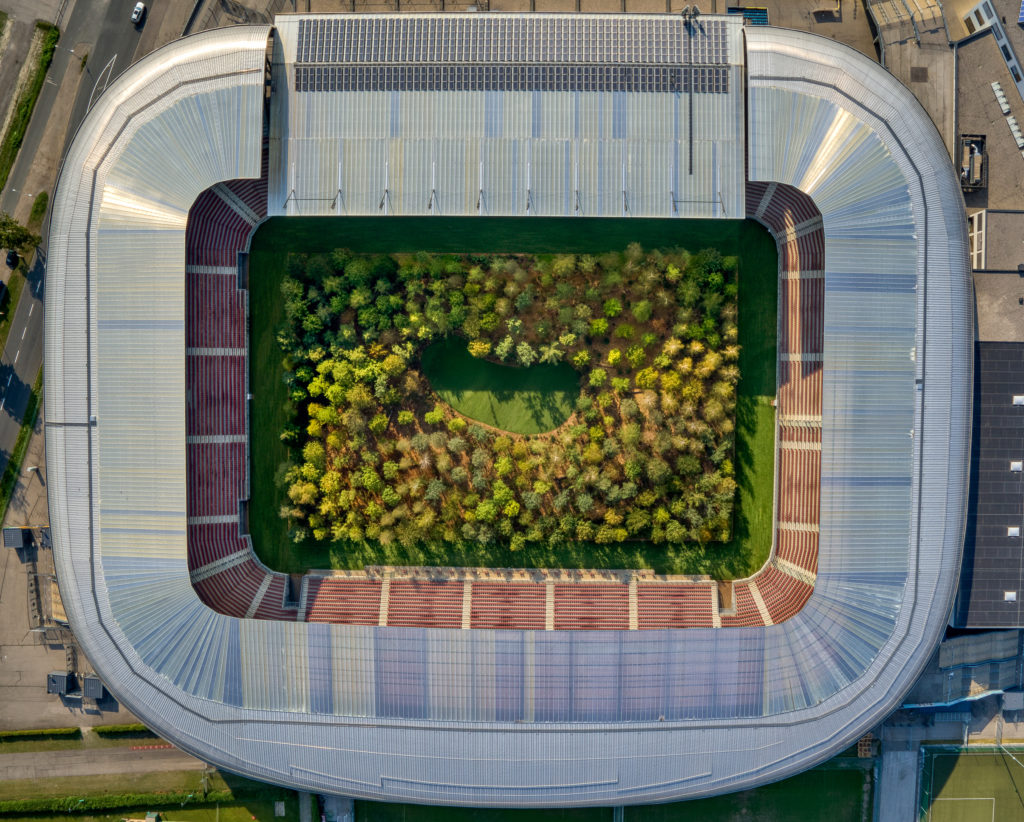Tales from my table.
Please hold, we are experiencing a global pandemic…
The Art of Sustainability was on the shelf for about a month while I put my “home-school teacher” hat on and our family got used to a whole new routine. But, it’s Earth Day 2020 and I wanted to share something positive and engaging as part of the March-April Engage! art theme on The Art of Sustainability Instragram feed.
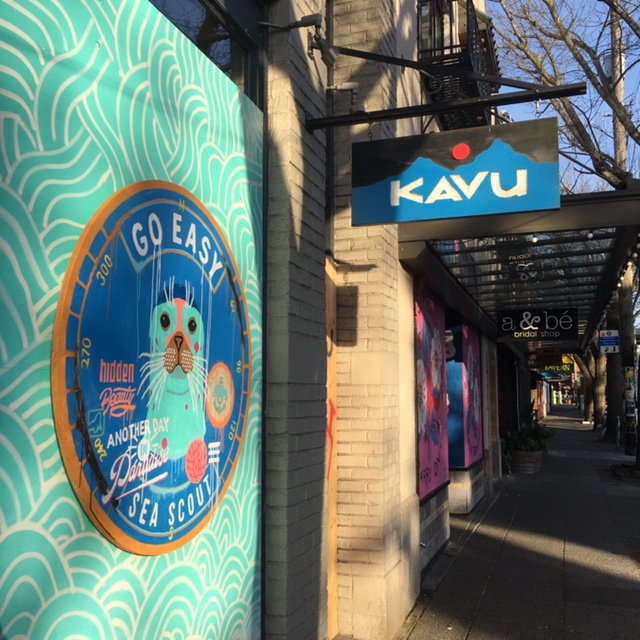
Go Easy mural by Tay Reed at Kavu Ballard. Murals have been popping up all over the city of Seattle in response to the Corona virus closures. 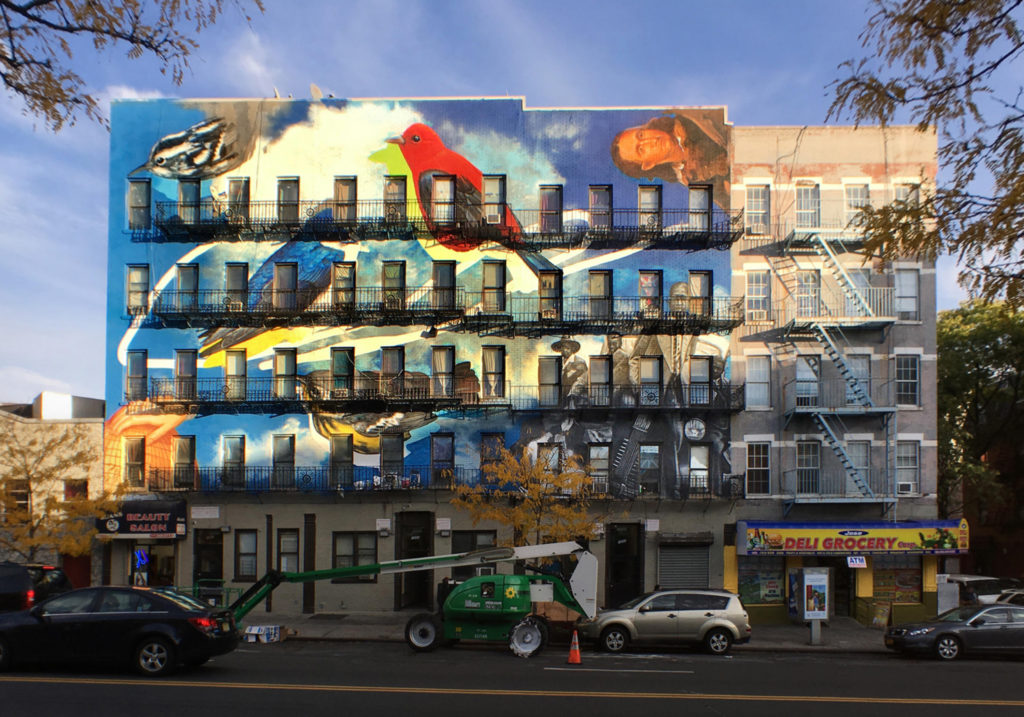
Endangered Harlem mural by GAIA as part of the Audubon Mural Project in NYC. Photo by Mike Fernandez/Audubon. 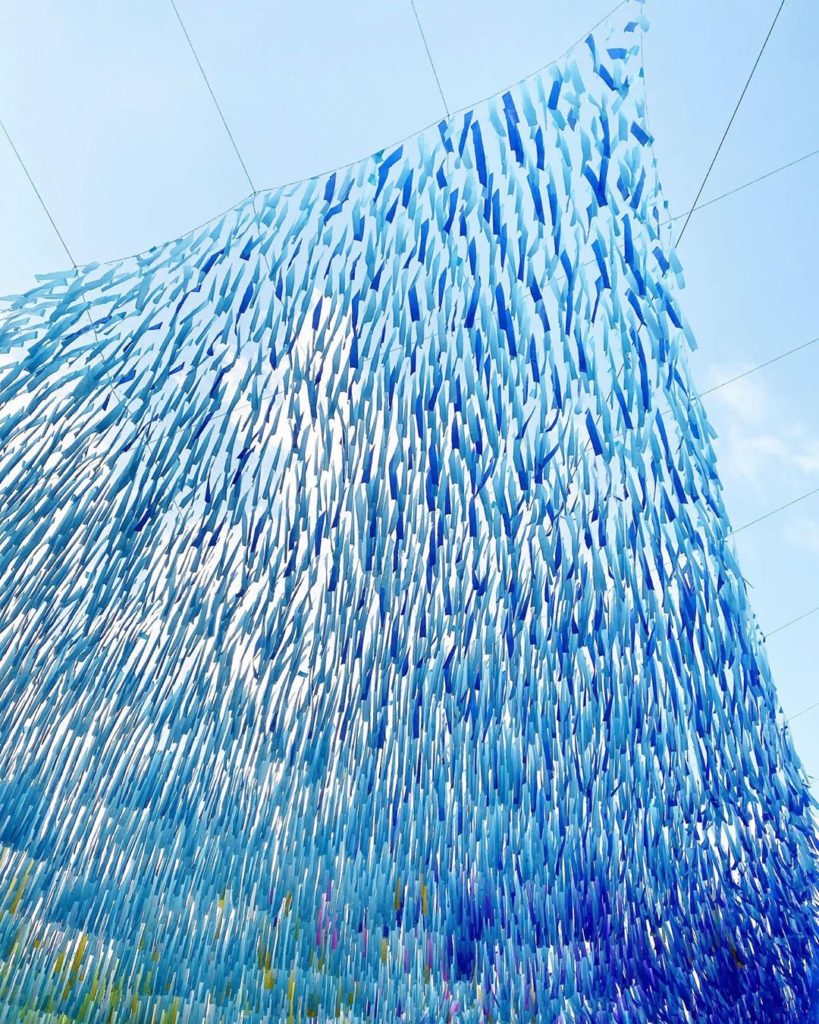
Liquid Shard by Poetic Kinetics in the City of Angels (2016).
As outward activities are off the table, and after a day of juggling teaching, consulting, and a bit of art here and there, I find myself ready to reach for a good book (OK, if I’m not video chatting with friends, or out enjoying the sporadic sun of a Seattle spring). But I am definitely reading more than I did before the “stay at home” orders came through, and thus offer you this list of engaging reads fresh from my end table:
Design by Nature: Creating Layered, Lived-In Spaces, by Erica Tanov
I picked this book up at one of my favorite bookstores, the James Bookseller in Port Townsend, on my last out-of-town outing before the Seattle shut-down. This book pretty much sums up what I’d like my home style to be. We are slowly remodeling and updating a 1908 Craftsman house that we moved into 2 weeks before becoming parents. So my space has glimmers of hope, but is a long way from “finished”. I find browsing through the pages very calming and inspiring. I appreciate the tales of second hand finds, the artful curation of objects and the organic, cozy, bohemian but modern vibe. I aspire to be minimalist when it comes to possessions but not necessarily when it comes to art and design, plus with a young child and the fact that we are all working and schooling at home right now, these pages offer a much more attainable aesthetic.
A World of Three Zeroes: The New Economy of Zero Poverty, Zero Unemployment, and Zero Net Carbon Emissions, by Muhammad Yunus
Mr. Yunnus won the Nobel Peace Prize, so that piqued my interest in learning what he might envision as a positive path forward. Of course the current pandemic may change things, or just make it even more pressing as we recover from the crisis. Two major themes emerge: the role of businesses in adopting social benefit metrics in their missions, and micro-banking that emphasizes small loans for individuals and small businesses. The book covers policy changes needed, but here in the U.S. it might just have to start directly with businesses of all sizes to lead the way since government currently cannot move forward. I appreciated the emphasis on solutions, some of which relate to actions we can take ourselves: vote, shop locally, support businesses that support your values.
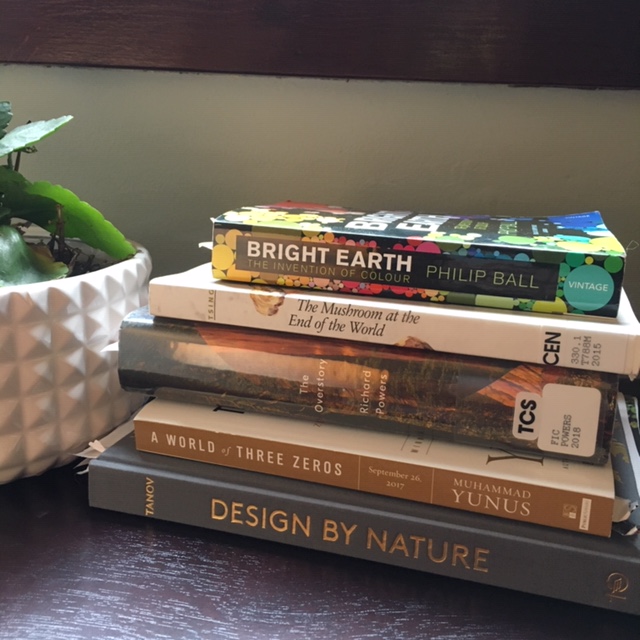
Bright Earth: Art and the Invention of Color, by Phillip Ball
As an artist, I enjoy making things. I also want what I make to reflect my values and interests. The materials I use are also important. As an oil painter, I’ve been making changes in my materials to be more eco and health friendly. Learning more about the pigments used in art materials, their history and how they’re made is fascinating. It will also help me continue to green my studio practice. More to come on that in future at my fine art site.
The Overstory by Richard Powers
The interlocking fables of The Overstory (winner of 2019 Pulitzer Prize in Fiction) each feature a tree in some fashion. In a n almost mystical world slow and interconnected with ours, some of the tales are uplifting, some a bit dark. The tales intertwine in later sections of the book, much like the extensive networks below our forests. I’m still reading this one, so will update this section once I finish. Suffice it to say, now is the perfect time to lose yourself in the trees.
The Mushroom at the End of the World: On the Possibility of Life in Capitalist Ruins, by Anna Lowenhaupt Tsing
I worry a lot about where we’re heading as a society. When I discovered this book, I knew I had to read it. The matsusake is the most valuable fungus on the planet, so that alone made me curious. It only grows in human disturbed forests; these little morsels thrive in and help restore damaged ecosystems. The commerce and culture of the international matsusake trade along with lessons for environmental renewal from a mushroom provided an interesting and suspenseful narrative for a non-fiction work.
Support local bookshops, books available at Bookshop.org, on the first The Art of Sustainability booklist!
(Disclaimer: The Art of Sustainability will earn a commission on purchases made via this link. Purchases from The Bookshop also support participating independent, local bookstores.)

